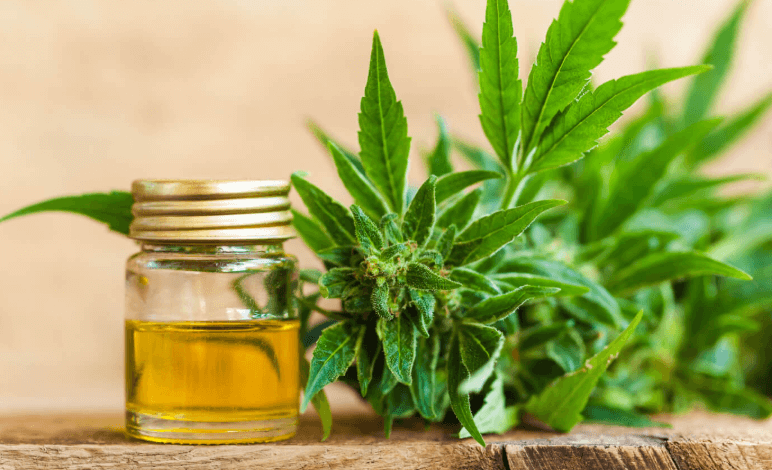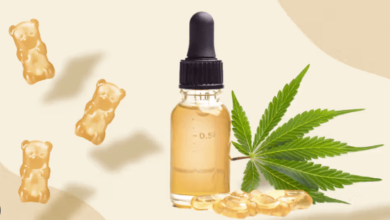Does Cbd Ointment Get in Your Bloodstream

The question of whether CBD ointment enters the bloodstream is a nuanced one, as it encompasses the complexities of skin absorption and the pharmacological properties of cannabinoids. While CBD ointments are designed to provide localized relief by interacting with skin receptors, the extent of systemic absorption remains a topic of ongoing research. Factors such as formulation, skin integrity, and individual physiology play pivotal roles in determining how much, if any, CBD might reach the bloodstream. Understanding these dynamics prompts further exploration into the implications for therapeutic use and user experience, raising important questions about efficacy and safety.
Understanding CBD Ointments
CBD ointments are topical preparations infused with cannabidiol, designed for localized application to provide potential therapeutic benefits without significant systemic absorption.
These products are often used for targeted relief, addressing issues such as inflammation, pain, or skin conditions.
The benefits of CBD ointments stem from their ability to deliver cannabinoids directly to affected areas, allowing for effective topical usage while minimizing systemic effects.
See also: Icd 10 Code for Muscle Weakness
How Skin Absorption Works
Understanding how skin absorption functions is key to comprehending the effectiveness of topical formulations like CBD ointments in delivering therapeutic agents directly to targeted areas.
The skin acts as a barrier, allowing selective permeability for beneficial compounds.
This targeted delivery supports skin health while maximizing topical benefits, ensuring that active ingredients effectively penetrate the epidermis to provide relief without systemic involvement.
The Role of Cannabinoids
Cannabinoids play a crucial role in the absorption mechanism of CBD ointments, interacting with the skin barrier to facilitate their entry into the bloodstream.
Understanding this interaction helps to clarify how cannabinoids exert systemic effects throughout the body.
A comprehensive examination of these processes is essential for evaluating the therapeutic potential of CBD products.
Cannabinoid Absorption Mechanism
The absorption mechanism of cannabinoids involves their interaction with the body’s endocannabinoid system, which plays a crucial role in modulating various physiological processes.
Cannabinoid receptors, primarily located throughout the body, facilitate this interaction.
Transdermal delivery of CBD ointments allows cannabinoids to penetrate the skin, potentially activating these receptors locally, thereby influencing pain and inflammation without necessitating systemic absorption into the bloodstream.
Skin Barrier Interaction
Several factors influence how cannabinoids interact with the skin barrier, including the formulation of the ointment and the lipid composition of the stratum corneum.
Effective transdermal delivery relies on the ability of cannabinoids to penetrate this barrier.
Enhancing skin permeability through specific formulations can optimize cannabinoid absorption, thus maximizing therapeutic benefits while minimizing systemic exposure.
This approach aligns with the desire for personal freedom in health choices.
Systemic Effects Explained
Understanding the systemic effects of cannabinoids involves examining their interaction with the body’s endocannabinoid system, which plays a crucial role in regulating various physiological processes.
The CBD pharmacokinetics of topical applications, such as ointments, impact their effectiveness.
While topical bioavailability may be limited, some cannabinoids can penetrate deeper layers of skin, potentially leading to systemic effects depending on individual absorption rates and application methods.
Factors Influencing Absorption
The absorption of CBD ointment into the bloodstream is influenced by several key factors.
These include the skin penetration ability of the formulation, the application method employed, and the specific ingredients within the product.
Understanding these variables is essential for optimizing the efficacy of CBD topical treatments.
Skin Penetration Ability
Various factors influence the skin penetration ability of CBD ointments, affecting their overall absorption into the bloodstream.
Key elements include formulation properties, such as lipophilicity and molecular size, which impact transdermal delivery.
Additionally, skin condition and thickness play significant roles.
Addressing bioavailability concerns is crucial for optimizing the effectiveness of CBD ointments and ensuring adequate therapeutic benefits.
Application Method Used
How the application method of CBD ointments is executed can significantly impact their absorption into the bloodstream, with factors such as technique, duration of application, and area of coverage playing crucial roles.
Effective application techniques enhance dosage effectiveness, ensuring that a sufficient amount of CBD penetrates the skin barrier.
Consequently, understanding these factors is essential for optimizing therapeutic outcomes and maximizing the benefits of CBD ointments.
Formulation Ingredients Impact
Formulation ingredients play a critical role in determining the absorption efficacy of CBD ointments, as they influence the permeability of the skin barrier and the overall bioavailability of the active compounds.
Ingredient synergy enhances therapeutic effects, while formulation stability ensures consistent performance.
These factors collectively impact how effectively CBD enters the bloodstream, ultimately affecting its potential benefits for users seeking relief.
Research on CBD Absorption
Recent studies indicate that the absorption of CBD through the skin is significantly influenced by factors such as formulation type, concentration, and the presence of permeation enhancers.
Additionally, different skin types may exhibit varying absorption rates, potentially affecting the optimal CBD dosage for individual users.
Understanding these variables is crucial for maximizing the efficacy of CBD ointments in achieving desired therapeutic effects.
Local Vs. Systemic Effects
The distinction between local and systemic effects of CBD ointments is essential for understanding their therapeutic applications and potential benefits.
Local effects refer to the targeted relief experienced at the application site, while systemic absorption involves the distribution of CBD throughout the body.
This distinction is crucial for users seeking either localized treatment or broader systemic relief, influencing their selection of CBD products.
User Experiences and Anecdotes
User experiences and anecdotes provide valuable insights into the effectiveness and perceived benefits of CBD ointments, particularly in relation to their local versus systemic effects.
Many users report relief from localized pain and inflammation with minimal systemic impact, supporting the notion that CBD ointments can effectively target specific areas.
However, anecdotal evidence varies, highlighting the need for further research to substantiate these claims.
Comparing Topical Applications
Comparing various topical applications of CBD ointments reveals differences in formulation, absorption rates, and efficacy, which can significantly influence user outcomes.
Different products may offer varying topical benefits, with some designed for rapid absorption and others for prolonged effects.
Understanding these factors is crucial for users seeking targeted relief, allowing them to make informed choices that align with their personal wellness goals.
Future Research Directions
Future research should focus on understanding the pharmacokinetics of CBD ointments, particularly their absorption mechanisms and systemic effects when applied topically.
Investigating future trends in formulation development will address existing research challenges, such as variability in individual responses and the influence of skin barriers.
Enhanced knowledge in these areas will facilitate the optimization of CBD ointments for effective therapeutic use without compromising user autonomy.
Conclusion
In conclusion, while CBD ointments primarily offer localized relief through interaction with skin receptors, minimal systemic absorption occurs.
Research indicates that up to 90% of cannabinoids applied topically may not penetrate beyond the outer skin layers, highlighting their targeted efficacy.
This mechanism allows users to experience pain relief without significant entry into the bloodstream.
Continued exploration of topical cannabinoids may further elucidate their therapeutic potential and optimal applications in pain management and inflammation.



